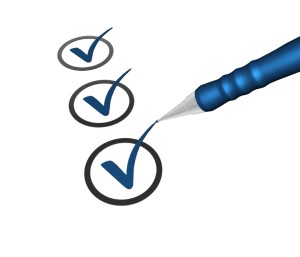If your purified water system is going to be used for a validated process or product, you must develop a set of water system validation guidelines. This will help assure that your system operates properly and does what you say it will. Here are three specifications that must be included.
To be clear, we do not write validation processes for our customers, we assist our customers with the required information. For site specific validation, you will need to hire a process engineer, quality assurance professional or third party consultant.
However, we can help you understand the primary water treatment components you should include when creating your validation guidelines. It’s also important to note that validating your purified water system is only a small, but perhaps most important, part of an entire validation process.
Purified water is the start to most Biotech, Medical and Pharmaceutical products. Validating a water treatment system is a thorough way to confirm the purified water meets industry standards.
A validated purified water treatment system normally incorporates deionization or distillation as a polishing step. Polishing the purified water helps insure the product or process starts with a true purified water blank.
A true purified water blank will then take on the chemical structure of whatever is added to it.
The validation requirements differ for each customer, depending on the particular product. Still, these three specifications must always be included when validating a water treatment system.
Three Water Quality Specifications in Validated Purified Water Systems
1. Total Organic Carbon (TOC) Level
The TOC level indicates the total amount of organic content in a purified water stream. This number is the ultimate microbial test in a validated purified water system.
The maximum TOC level for most purified water systems is 500 parts per billion. We recommend measuring your TOC level on site with a TOC monitor.
If your purified water system does not have an inline TOC monitor, the alternative is to send a water sample to a lab for measurement. However, this method is not as accurate as measuring the TOC level on site.
2. Water Quality Measured in Conductivity or Resistivity
All validated purified water systems will require a water quality meter measuring either conductivity or resistivity. Highly purified water has a very low conductivity level, which results in the need for a resistivity meter. A resistivity meter will always be needed when deionization is used as the final polish of the purified water.
Your desired water quality standard will help determine what type of water quality meter you will ultimately need in your system.
Here’s the challenge – very few meters can actually measure a very low level of conductivity. Therefore, the FDA generally recognizes a resistivity measurement as an acceptable alternative to the conductivity standard.
When measuring water’s resistivity, water quality standards vary greatly with the high being 18.3 Megohms. At this level of resistivity the pH of the purified water is 7.
3. Microbial Testing (Bacteria and/or Endotoxins)
Bacteria is measured in CFUs (Colony Forming Units) per milliliter (ml). A TPC (Total Plate Count) test is a waterborne bacteria test that indicates how much bacteria is in a water sample.
For the validation process, bacteria is normally measured at levels somewhere less than 100 CFU/ml. Endotoxins are gram negative bacteria particles and are measured in EUs (Endotoxin Units) per milliliter (ml).
We can limit the amount of microbial growth in water by the way we design a water purification system. Each system should include bacteria control equipment, such as UV technology and a high quality “final” filter, the last filter in line before the water leaves the production area.
Additionally, water must flow at a high enough velocity (greater than 3 feet per second) to inhibit microbial growth in the system.
Showing that you can meet these standards is a good start, but you need to take it a step further by proving you can continually reach them. This requires you to document every detail of your water treatment system from start to finish.
For instance, you must note any time a technician services your water system, including when and why they were there, as well as any parts that were exchanged or replaced.
There are a number of different methods to validate a purified water system, but most consist of some or all of the following steps: Construction Qualification (CQ), Commissioning/Startup, Installation Qualification (IQ), Operational Qualification (OQ) and Performance Qualification (PQ).
Validating your water treatment process is only one part of the larger validation process, but it’s crucial for proving the consistency of an end product. Create comprehensive water system validation guidelines to show the FDA that your water is safe to use for your product.
We’ll do more than give you a quote—we’ll visit your site to analyze your industrial water needs.


Follow Us